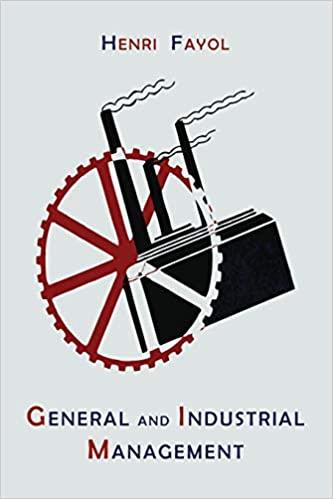Answered step by step
Verified Expert Solution
Question
1 Approved Answer
CASE STU Specialty Packaging Corporation, Part A Julie Williams had a lot on her mind when she left the conference room at Specialty Packaging Corporation
CASE
STU
Specialty Packaging Corporation, Part A
Julie Williams had a lot on her mind when she left the conference room at Specialty Packaging Corporation SPC Her divisional manager had informed her that she would be assigned to a team consisting of SPCs marketing vice president and several staff members from their key customers. The goal of this team was to improve supply chain performance, as SPC had been unable to meet all the demand of their customers over the past several years. This often left SPCs customers scrambling to meet new client demands. Julie had little contact with SPCs customers and wondered how she would add value to this process. She was told by her division manager that the team's first task was to establish a collaborative forecast using data from both SPC and their customers. This forecast would serve as the basis for improving their performance as they could use this more accurate forecast for their production planning. With this in place, SPC would have a key tool to improve delivery performance.
SPC
SPC turns polystyrene resin into recyclabledisposable containers for the food industry. Polystyrene is purchased as a commodity in the form of resin pellets. The resin is unloaded from bulk rail containers or overland trailers into storage silos. Making the food containers is a twostep process. First, resin is conveyed to an extruder, which converts it into polystyrene sheet wound into rolls. The plastic comes in two formsclear and black. The rolls are either used immediately to make containers or are put into storage. Second, the rolls are loaded onto thermo
forming presses, which form the sheet into containers and trim the containers from the sheet. The two manufacturing steps are shown in Figure
Over the past five years, the plastic packaging business has grown steadily. Demand for containers made from clear plastic comes from grocery stores, bakeries, and restaurants. Demand for black plastic trays comes from caterers and grocery stores, who use them as packaging and serving trays. Demand for clear plastic containers peaks in the summer months, whereas demand for black plastic containers peaks in the fall. Capacity on the extruders is not sufficient to cover demand for sheets during the peak seasons. As a result, the plant is forced to build inventory of each type of sheet in anticipation of future demand. Table and Figure display historical quarterly demand for each of the two types clear and black of containers. This demand data was modified from SPCs sales data by the team to take into account the lost sales when SPC was out of stock. Without the customers involved in this team, SPC would never have known this information as they did not keep track of lost orders.
FORECASTING
As a first step in the team's decision making, they want to forecast quarterly demand for each of the two types of containers for the years to Based on historical trends, demand is expected to continue to grow until after which it is expected to plateau. Julie must select the appropriate forecasting method and estimate the likely forecast error. Which method should she choose?
PART III Planning Demand and Supply in a Supply Chain
tableTABLE Quarterly Historical Demand for Clear and Black Plastic Containers,,YearQuarter,tableBlack Plastic Demand lbstableClear Plastic Demand lbsIIIIII,IVI,IIIII,IVI,IIIII,IVI,IIIII,IVI,IIIII,IV
FIGURE Plot of Quarterly Demand for Clear and Black Plastic Containers
CHAPTER Aggregate Planning in the Supply Chain
CASESTUDY
Specialty Packaging Corporation, Part B
Julie Williams, facility production planning manager at SPC left the meeting with the collaborative forecast team with forecasts and error estimates for the next three years. She now needed to determine how to meet this demand. Because SPC sometimes outsourced warehousing, one decision Julie had to make was whether to use public or private warehousing. She also had to decide how much warehouse space to lease or build if she chose to use private warehousing.
SPC
From the discussion of this case in Chapter recall that SPC processes polystyrene resin into recyclabledisposable containers for the food industry. Polystyrene is purchased as a commodity in the form of resin pellets. The resin is unloaded from bulk rail containers or overland trailers into storage silos. Making the food containers is a twostep process. In the first step, resin is conveyed to an extruder, which turns pellets into a polystyrene
sheet that is wound into rolls. The plastic comes in two forms clear and black. The rolls are then

Step by Step Solution
There are 3 Steps involved in it
Step: 1

Get Instant Access to Expert-Tailored Solutions
See step-by-step solutions with expert insights and AI powered tools for academic success
Step: 2

Step: 3

Ace Your Homework with AI
Get the answers you need in no time with our AI-driven, step-by-step assistance
Get Started


